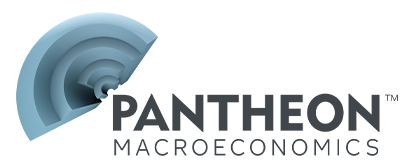- Our baseline assumes a mild US tariff rate increase and therefore limited impact on EZ exports and GDP.
- If the US raises tariffs on all goods apart from EU goods, GDP could rise by twice as much this year.
- A big universal tariff increase instead could see a Eurozone recession and GDP falling by 1% or so.
Melanie Debono (Senior Eurozone Economist)Eurozone
- Polls are little changed in Germany; a grand coalition between CDU/CSU and SPD still looks the best bet.
- The debt brake is ripe for change, but what is the best way to loosen Germany’s fiscal rules?
- AFD’s support is rising; is a two-party coalition with the CDU/CSU an outsized risk?
Claus Vistesen (Chief Eurozone Economist)Eurozone
In one line: Falling back but still consistent with a supra-50 EZ composite PMI.
Melanie Debono (Senior Eurozone Economist)Eurozone
- A US move to use energy as a bargaining chip in trade negotiations would send EZ prices higher.
- The Greenland question could inadvertently spark a trade war between the EU and the US.
- Mr. Trump’s pledge to end the war in Ukraine quickly is a key test case for America’s NATO commitment.
Claus Vistesen (Chief Eurozone Economist)Eurozone
In one line: Construction supported growth in Q4.
Melanie Debono (Senior Eurozone Economist)Eurozone
In one line: Upside risks building in energy, but the Q1 core looks benign on our forecasts.
Claus Vistesen (Chief Eurozone Economist)Eurozone
- Weak capex and declining private consumption raise alarms for Mexico’s near-term economic outlook.
- Potential tariff threats and trade negotiations could complicate economic ties between US and Mexico.
- Ongoing reforms and budget deficits will hinder Mexico’s economic flexibility and growth prospects.
Melanie Debono (Senior Eurozone Economist)Eurozone
- Upside risks are building for EZ energy inflation in January due to rising oil prices and one-off effects.
- Our Q1 core inflation forecasts are lower than the ECB’s, but we’re in line on the headline.
- We still see three more 25bp rate cuts this year, but risks are now tilted towards two.
Claus Vistesen (Chief Eurozone Economist)Eurozone
In one line: EZ goods trade was still a drag on growth in Q4.
Melanie Debono (Senior Eurozone Economist)Eurozone
In one line: Core inflation is sticky around 3%.
Claus Vistesen (Chief Eurozone Economist)Eurozone
In one line: Industry was a drag on EZ GDP again in Q4.
Melanie Debono (Senior Eurozone Economist)Eurozone
- EZ trade rebounded in November, thanks to a bounce-back in exports to the US…
- ...This is not a clear sign of front-loading, yet, but marks a rebound from US port closures in October.
- US firms are more focused on China at the moment, which risks limited near-term upside for EZ exports.
Melanie Debono (Senior Eurozone Economist)Eurozone
In one line: Investment is falling off a cliff; what’s the play Mr. Merz?
Claus Vistesen (Chief Eurozone Economist)Eurozone
In one line: Dovish; upside risks for the headline in January, but electricity tariffs set to fall sharply in February.
Claus Vistesen (Chief Eurozone Economist)Eurozone
- The investment downturn in Germany deepened in 2024; the new government will need to act.
- This year should be a year of recovery for growth in German household consumption.
- Headline inflation in France is set for a volatile few months due to big swings in energy prices.
Claus Vistesen (Chief Eurozone Economist)Eurozone
In one line: Improvement in industry in Q4 is partly why we think GDP growth rebounded.
Melanie Debono (Senior Eurozone Economist)Eurozone
- Italian industrial production data for November were decent, as we expected…
- ...We continue to think Italian GDP rose in Q4, after stagnating in Q3; our 0.3% call is above consensus.
- Growth will rise in 2025 and—barring any political upheaval—the BTP-Bund spread will narrow further.
Melanie Debono (Senior Eurozone Economist)Eurozone
- Euro area equities have been propped up by elevated margins, but can this continue?
- A forecast with margins one SD above their average still points to around 10% downside for EZ equities.
- Book value points to negative returns for EZ equity investors on a five-year basis.
Claus Vistesen (Chief Eurozone Economist)Eurozone
In one line: Disappointing, but output will snap back quickly.
Claus Vistesen (Chief Eurozone Economist)Eurozone
